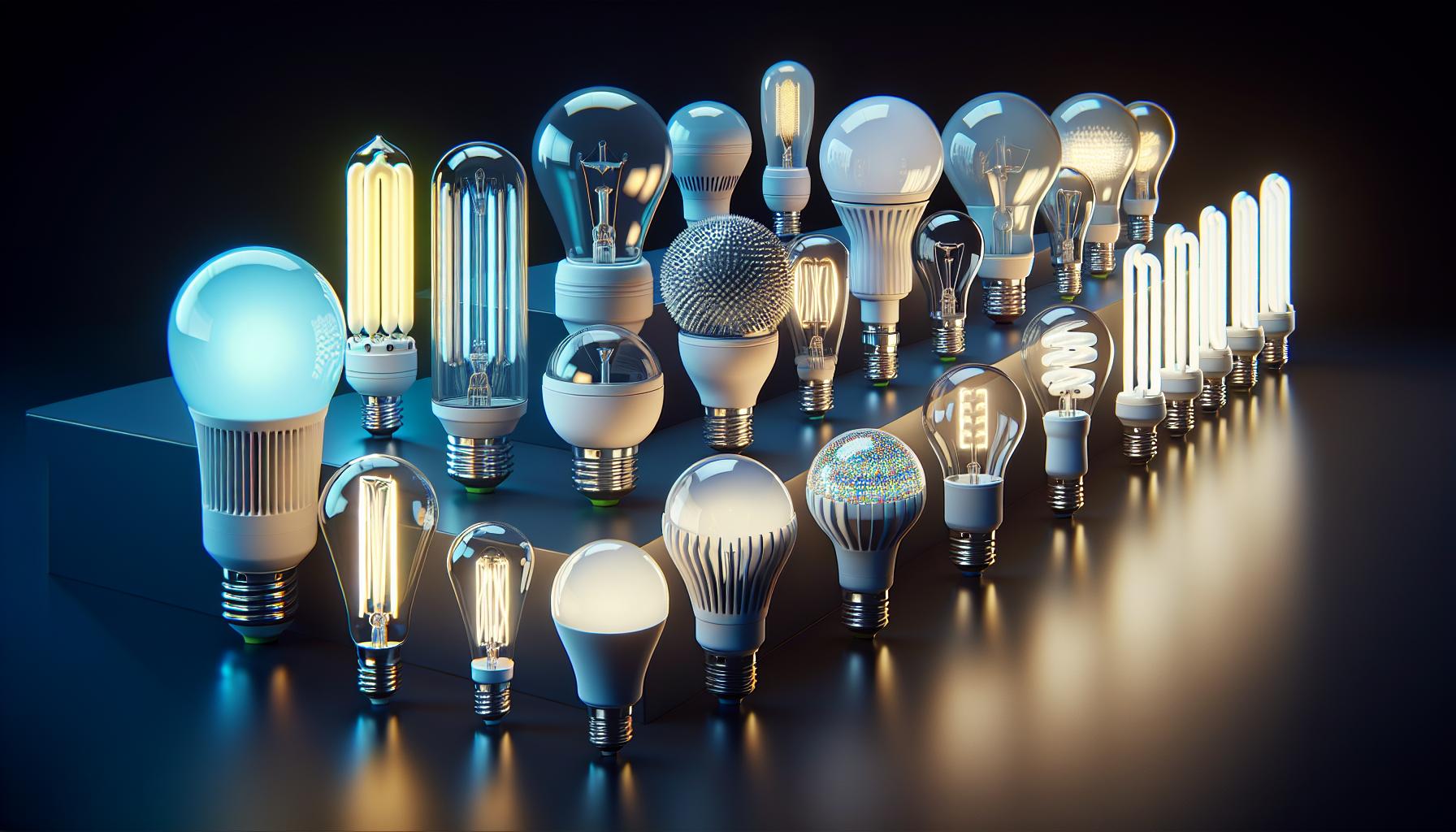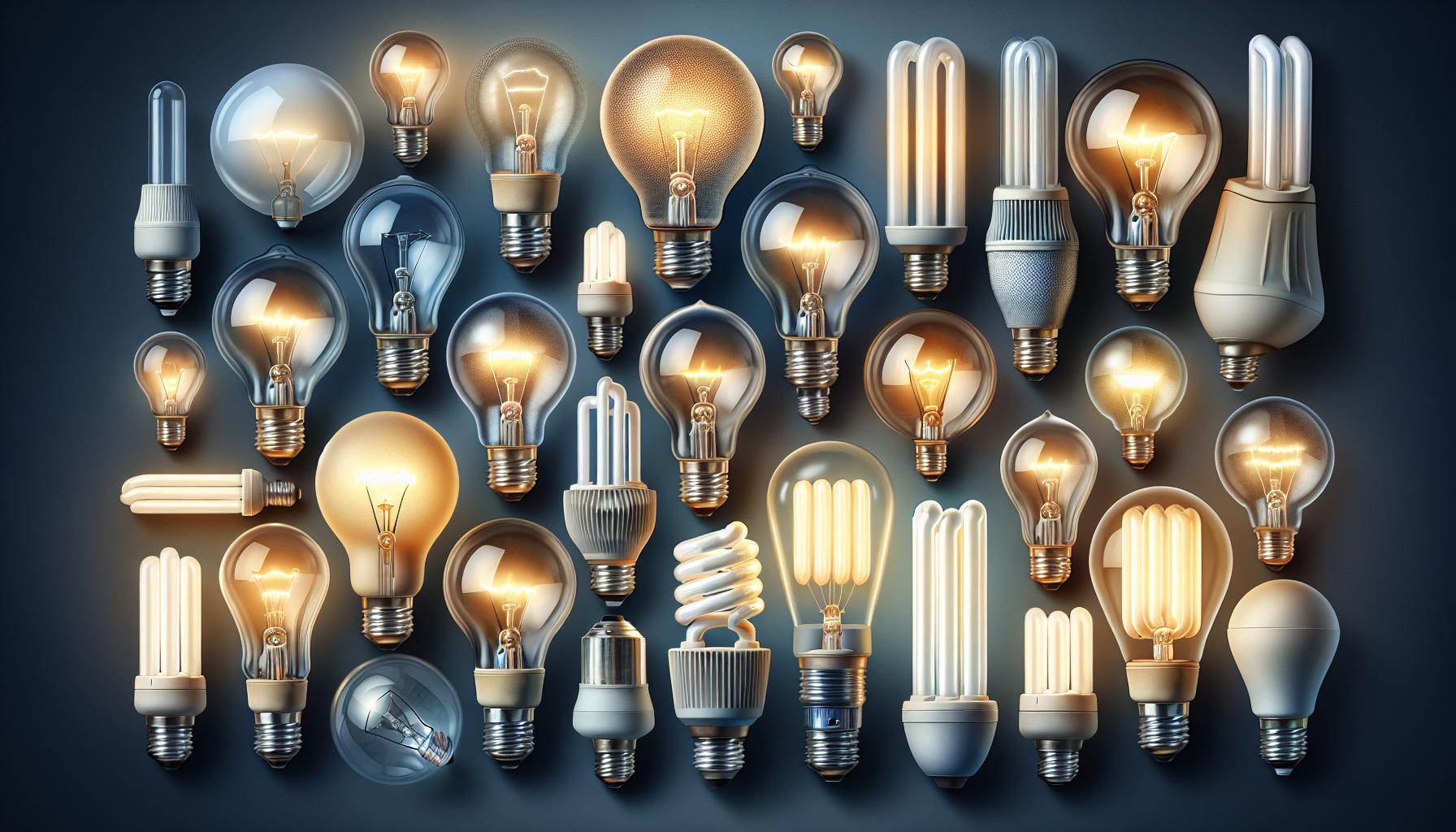Ever found yourself wondering just how often you should be swapping out those light bulbs? It’s a flicker here, a dim there, and suddenly you’re standing on a chair, twisting in a new bulb. It seems like a simple task, but there’s actually a bit of science and strategy behind it.

You might think light bulbs are a set-it-and-forget-it affair, but the longevity of your bulbs can be influenced by a variety of factors. From the type of bulb you’re using to how you use them, there’s more to consider than you might expect. Let’s shed some light on the subject and help you figure out the best time to make the switch.
The Lifespan of Light Bulbs
When you’re standing in the lighting aisle, pondering over the sea of options before you, understanding the lifespan of each type of light bulb is crucial. Incandescent bulbs, those old-school classics, typically last between 750 to 2,000 hours. On the other hand, CFLs (compact fluorescent lamps) offer a significantly longer lifespan of about 8,000 to 10,000 hours.
Let’s not forget the newest player in the game, the LED bulb. LEDs are the longevity champions with an impressive lifespan that ranges from 20,000 to 50,000 hours. That’s a game-changer for your DIY lighting projects and your wallet. They might come with a higher upfront cost, but they’ll have you climbing the ladder to change them far less frequently.
But here’s the twist – just because a bulb can last for years doesn’t mean it will. Various factors like voltage fluctuations, dimmer compatibility, and even how often you flick that switch impact the actual lifespan. Here’s a quick breakdown in table form:
| Bulb Type | Average Lifespan (Hours) |
|---|---|
| Incandescent | 750-2,000 |
| CFL | 8,000-10,000 |
| LED | 20,000-50,000 |
Frequent on-and-off cycles can lead to an early demise for some bulbs, especially CFLs, which are particularly sensitive to this kind of usage pattern. Moreover, well-ventilated fixtures extend a bulb’s life by preventing the enemy of all electronics: heat buildup.
As you’re rolling up your sleeves for the next home improvement challenge, bear in mind that your lighting setup isn’t just about tossing in a bulb and forgetting it. It’s about creating an efficient, long-lasting system. So when picking out your weapon of choice from the light bulb arsenal, always balance the initial cost against the expected lifespan. Your future self will thank you when you’re enjoying your brilliantly lit, cozy reading nook year after year.
Factors that Affect the Lifespan of Light Bulbs
How often you find yourself reaching for a new light bulb greatly depends on the forces at play around your current bulbs. Identifying these culprits is key to extending the life of your enlightened companions.
Usage Patterns
First and foremost, consider how you use the lights in your home:
- Do you turn them on and off frequently?
- Are they ablaze for long hours each day?
- Or, are they used sparingly?
Lights subject to frequent on-and-off cycles endure more stress than those that remain on for extended periods, trimming down their lifespan bit by bit.
Power Quality
It’s not just about usage but also about the power feeding your bulbs. Voltage fluctuations are a silent menace to the longevity of your home’s light sources. A stable power supply ensures that your bulbs shine bright for their full term. Here’s a snapshot of how power issues can hit your bulbs hard:
| Power Quality Problem | Potential Impact on Bulbs |
|---|---|
| Voltage Surges | Premature Burnout |
| Brownouts | Reduced Performance |
| Frequent Power Cycles | Decreased Lifespan |
Environmental Conditions
Your bulbs face more than just electrical threats. The environment in which they operate plays a major role too:
- Humidity can creep into fixtures and wreak havoc.
- Excessive heat build-up can cause bulbs, especially incandescents, to fatigue prematurely.
- Fixtures not designed for outdoor use will falter faster in the elements.
Choose the right bulb for the right setting to combat these environmental villains.
Proper Installation
« Why Is My Light Bulb Not Turning Off? Find Solutions Here
What Light Bulbs Emit the Least Amount of Heat? Discover Energy-Saving Options »
Hand-in-hand with choosing the right bulb is installing it correctly. Ensure:
- The fixture matches the bulb’s requirements.
- There’s no loose connection causing the bulb to flicker.
- The bulb isn’t in a position where it’s prone to physical damage.
Remember, your bulbs are your DIY project partners. Treat them well, and they’ll return the favor with years of luminous service. Keep their enemies at bay, and you’ll notice you’re changing them less often than ever before.
Different Types of Light Bulbs
When diving into the world of light bulbs, you’ll find a fascinating variety, each with its own lifespan and characteristics. Let’s shed some light on the most common types.
Incandescent bulbs are the old-school classics. You’d recognize them by their warm glow and straightforward design, but they’re not the kings of longevity. Typically, they last about 750 to 2,000 hours. They give off a cozy ambiance, perfect for your living room or bedroom. However, their shorter lifespan means you might find yourself replacing them more often than you’d like.
Next up, halogen bulbs. These are like incandescent bulbs’ more efficient siblings. They’re known for their bright, white light and are often used in spotlights or reading lamps. Halogens hit the 1,000 to 3,000-hour mark on the lifespan scale, but they run a bit hotter, so be careful when handling them.
Compact Fluorescent Lamps (CFLs) are the curly wonders saving you bucks in energy. These guys last way longer, around 8,000 to 15,000 hours. They take a moment to brighten up, but once they do, your den or office space stays brilliantly lit for ages.
And the champions in longevity, Light Emitting Diodes (LEDs). LEDs are the superheroes of the light bulb world. With lifespans soaring anywhere from 20,000 to 50,000 hours, they are unmatched. They’re energy-efficient and sturdy, plus they come in various colors and dimming options, making them ideal for both practical and mood lighting.
Remember, the lifespan of your bulbs also hinges on their treatment and your home’s electrical robustness. Opt for the type that fits your space’s needs and watch them work wonders for longer. Whether you’re a DIY enthusiast or simply yearn for a well-lit nook, understanding these differences can go a long way in planning your home’s lighting needs.
How to Extend the Lifespan of Light Bulbs
Proper Installation Matters
You may not realize it, but the way you screw in a light bulb can have a significant impact on its longevity. Always ensure a snug fit – too loose and it won’t work properly, too tight and you risk damaging the bulb’s components. Make a habit of gently rotating the bulb clockwise until it just stops turning, and you’re set.
Environmental Considerations
Environmental factors are crucial to bulb life. To get the most out of your bulbs:
- Avoid frequently turning them on and off.
- Keep them away from high moisture areas unless they’re designed for it.
- Use them in well-ventilated fixtures to prevent overheating.
Choose the Right Bulb for the Right Purpose
While LEDs are versatile, using the correct bulb type for the right fixture or application extends the lifespan of all bulb varieties. For example:
- Use vibration-resistant bulbs in areas like workshops.
- Opt for outdoor-rated bulbs for exterior lighting.
- Install full-spectrum bulbs for tasks that require color accuracy.
Regular Maintenance
A bit of upkeep goes a long way. Always dust off your bulbs and fixtures since dirt and grime can absorb light and cause the bulb to work harder, shortening its life. For outside fixtures, periodic cleaning is essential to prevent the encroachment of creepy crawlies that might fancy a warm bulb.
Dimmer Switches and Smart Features
Leverage technology to prolong bulb life. Dimmer switches allow you to lower the light output, drawing less power and reducing wear. Smart bulbs come with features that can automatically adjust to ideal settings, making life easier for both you and your bulb.
Investing a little time into understanding and caring for your lighting can dramatically affect how often you’re climbing the ladder to change those bulbs. With a few simple tweaks, you’ll maximize efficiency and save yourself both time and money in the long run.
When to Change Light Bulbs
Knowing when to change your light bulbs is as important as knowing how to preserve their life. The lifespan of a bulb can vary significantly, influenced by its design, use, and the environment in which it’s placed. Let’s shine some light on the telltale signs that it’s time for a change.
Firstly, if a bulb flickers, it’s often a sign that it’s at the end of its life. This can be especially true for incandescent bulbs. However, flickering can sometimes be due to electrical issues, so double-check your connections if this occurs.
Here’s an easy guide to gauge when your bulbs might need replacing based on the type of bulb you’re using:
| Bulb Type | Average Lifespan |
|---|---|
| Incandescent | 750 to 2,000 hours |
| Halogen | 2,000 to 4,000 hours |
| CFL (Compact Fluorescent Lamp) | 6,000 to 15,000 hours |
| LED (Light Emitting Diode) | 25,000 to 50,000 hours |
As you can see, LEDs tend to outlast other types of bulbs by a considerable margin. They’re your best bet if you’re aiming for bulbs that you won’t have to change often.
Dimming brightness is another clue. Over time, all light bulbs will start to dim; this is more pronounced in incandescent and halogen bulbs. If your room starts to look a little dimmer than usual, it’s likely time for a bulb update.
Lastly, pay attention to color changes. Some bulbs may shift in color as they age, which might be an aesthetic issue if you’re keen on consistent lighting in your space. It’s subtle, but if you’ve got a keen eye, you’ll notice these changes over time.
Remember, replacing bulbs before they fail can save you from the annoyance of sudden darkness. Keep an eye out for these changes and stay one step ahead. Keep your ladder handy and your storage stocked with the right bulbs for a smooth, uninterrupted lighting experience in your home.
Conclusion
You’ve got the know-how to make your light bulbs last longer and the signs to watch for when they’re on their way out. Remember, it’s always better to replace them before they flicker out for good. With the right care and the occasional update, you’ll keep your home shining bright without any unexpected stumbles in the dark. Happy lighting!
Frequently Asked Questions
What are the best practices for extending the lifespan of light bulbs?
Proper installation, avoiding frequent on-and-off switching, and reducing vibration can help extend the life of your light bulbs. Additionally, cleaning them to remove dust can also improve longevity.
How often should light bulbs be changed?
Light bulbs need to be changed when they burn out; however, it’s recommended to replace them when they show signs of dimming or color change to avoid sudden darkness.
Why is it important to replace light bulbs before they fail?
Replacing light bulbs before they completely fail helps ensure that you are not left in the dark unexpectedly. It also allows for a more convenient and safe replacement on your schedule.
What environmental factors can affect the life of a light bulb?
Temperature fluctuations, humidity, and electrical surges can significantly affect a light bulb’s lifespan. Using bulbs suitable for your environment can mitigate these factors.
What type of light bulb is recommended for a longer-lasting lighting solution?
LED bulbs are recommended for a longer-lasting lighting solution due to their high energy efficiency and long lifespan compared to incandescent and fluorescent bulbs.
How can you tell if a light bulb needs to be replaced?
Dimming brightness, color changes, flickering, or not turning on at all are signs that a light bulb may need to be replaced.




